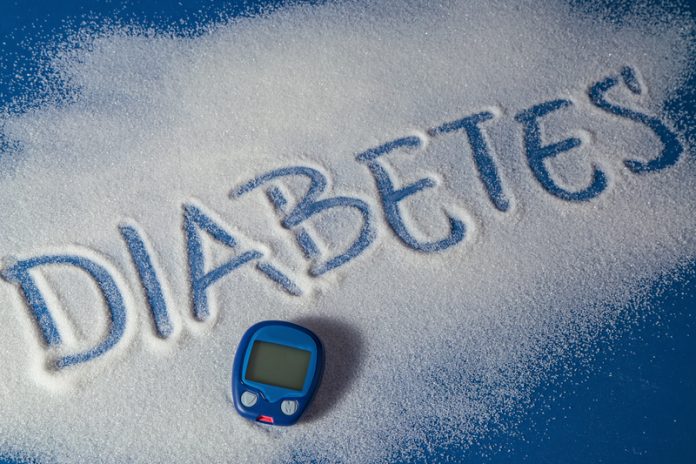Cecilia Van Cauwenberghe from Frost & Sullivan’s TechVision Group shares her thoughts on mobile health monitoring systems that address the global concern of diabetes
According to the Worldwide Health Organization (WHO), cases of diabetes have displayed a dramatic increment during the past decade, exhibiting a global prevalence of 9% among adults aged 18 years and older. The WHO says that an estimated 1.6 million deaths were directly caused by diabetes during 2015. Indeed, diabetes is expected to become the seventh leading cause of death by 2030, with more than 350 million individuals projected to be directly affected.
Diabetes has particularly increased among low- and middle-income countries, which suggests an increasing global socioeconomic burden. In addition, diabetes constitutes one of the primary causes of kidney failure and heart disease deaths. Diabetes also affects many other systems indirectly (Sahin and Naylor, 2017). In fact, diabetic retinopathy is caused by damage to the small blood vessels in the retina, resulting in a progressive loss of vision. This effect is dramatically increasing in people under the age of 40. Apart from that, almost 60% of non-traumatic lower-limb amputations in adults occur in people diagnosed with diabetes.
Under this framework, glucose monitoring becomes vital to avoid life-threatening or disability situations (David and Rafiullah, 2017). Approximately 50% of patients need to control their blood sugar levels with more than a single drug after completing the first three years of treatment. The remaining 50% require multiple therapies after 10 years of starting planned therapy. It is important to highlight that adherence to treatment also represents a major concern in diabetes. Over 50% of patients diagnosed register problems with adhering to monitoring and treatment, as well as measuring their blood sugar levels and calculating target levels, all of which are factors that lead to serious healthcare complications.
Opportunities and solutions
Despite the advent of disruptive innovations attempting to address the increasing concern among the scientific and clinical communities about diabetes, statistics continue to reveal a remarkable augmentation in the number of cases and deaths associated with advanced diabetes (Van Cauwenberghe, 2016).
Mobile health (mHealth) constitutes a breakthrough technology that significantly empowers patients by allowing them to set the pace of their treatment in a more individualised manner (Bradway et al., 2018). Indeed, mHealth interventions, including mobile apps, smartphones, handheld tablets and many other wireless devices, presently constitute one of the most promising approaches for the self-management of diabetes (Kitsiou et al., 2017).
The advent of the Internet of Things (IoT) and artificial intelligence (AI) are also encompassing mHealth solutions, providing them with a broad spectrum of functions (Fatehi et al., 2017). The growing incidence of chronic diseases, such as cardiovascular disease and diabetes means that mHealth and point-of-care devices become vital to help patients manage and track their health conditions. Thus, for instance, a glucometer can be connected to a smartphone to monitor a patient’s condition in a way that promotes comfort and ease of use.
Data is automatically recorded and can be shared instantly with the caregiver and/or stored in the cloud. Data can also be transferred via audio connectivity technology, which requires no internet connection. Overall, no extra batteries are needed, therefore, presenting remarkably superior competitive attributes in comparison with conventional blood glucose monitoring technologies (Rajan, 2018). Even better, wearable devices, either in the form of a band or a patch, can be also adapted to use at home for monitoring patients’ conditions.
Impact on the economy
The WHO estimates that there will be a shortage of 12.9 million healthcare workers worldwide by 2035. Consequently, mHealth monitoring systems are expected to play a crucial role in managing the growing burden of diseases, along with the depleting number of healthcare workers. mHealth monitoring may facilitate accurate, precise tests without the need for skilled personnel and patients. Moreover, mHealth monitoring reduces the need for onerous healthcare facilities, especially benefiting lower income economies.
Significant cost savings can be achieved by reducing doctor visits and laboratory overhead costs. Furthermore, mHealth monitoring focuses on prevention, early diagnostics and an improved management of chronic disease conditions, therefore, notably enhancing clinical outcomes and the cost of care. mHealth monitoring systems also provide patients with a more comfortable experience and relationship with the disease, which also contribute to a better quality of life.
Final remarks
Achieving appropriate glycemic control and effectively reducing the risk of hypoglycemia is presently focused on closed-loop, smartly monitored, insulin delivery system for patients with Type 1 diabetes mellitus. The real-time feedback between glucose levels and insulin delivery similar to insulin-producing cells, or beta cells of the islets of Langerhans, constitutes the distinguishing feature of the closed-loop system (Van Cauwenberghe, 2016).
New business models are emerging between large pharmaceutical/biopharmaceutical companies and medical devices firms with the objective of accelerating the delivery of novel therapeutic systems to the industry. Medical device companies and drug manufacturing companies sign long-term partnership agreements to combine their drug delivery devices with the most active diabetes therapeutics, thereby bringing down the operational costs and saving a significant amount of time during the process.
Acknowledgments
I would like to thank all contributors from industry involved with the development and delivery of this article from the TechVision Group at Frost & Sullivan.
References
Bradway, M., Giordanengo, A., Joakimsen, R., Hartvigsen, G. and Årsand, E., 2018, February. Stepwise Treatment Concept Proposed for an mHealth Enabled Diabetes Intervention. In DIABETES TECHNOLOGY &
THERAPEUTICS (Vol. 20, pp. A111-A112). 140 HUGUENOT STREET, 3RD FL, NEW ROCHELLE, NY 10801 USA: MARY ANN LIEBERT, INC.
David, S.K. and Rafiullah, M., 2017. Novel Health Mobile Technology as an Emerging Strategy in Diabetes Management. In Case Study of Innovative Projects-Successful Real Cases. InTech.
Kitsiou, S., Paré, G., Jaana, M. and Gerber, B., 2017. Effectiveness of mHealth interventions for patients with diabetes: an overview of systematic reviews. PloS one, 12(3), p.e0173160.
Fatehi, F., Gray, L.C. and Russell, A.W., 2017. Mobile health (mHealth) for diabetes care: opportunities and challenges. Diabetes technology & therapeutics, 19(1), pp.1-3.
Rajan, B., 2018. Breakthrough Innovations in PoC Diagnostics for Smart Healthcare. Frost & Sullivan TechVision Analysis. D817.
Sahin, C. and Naylor, P.J., 2017. Mixed-methods research in diabetes management via mobile health technologies: a scoping review. JMIR Diabetes, 2(1), p.e3.
Van Cauwenberghe, C., 2016. Next-generation Technologies for Diabetes Therapy and Drug Delivery – Depicting the Perfect Scenario for Cutting-edge Technology Convergence in Biomedical Sciences. Frost & Sullivan TechVision Analysis. D6D9.
Cecilia Van Cauwenberghe, PhD, MSc, BA
Associate Fellow and Senior Industry Analyst
TechVision Group, Frost & Sullivan











